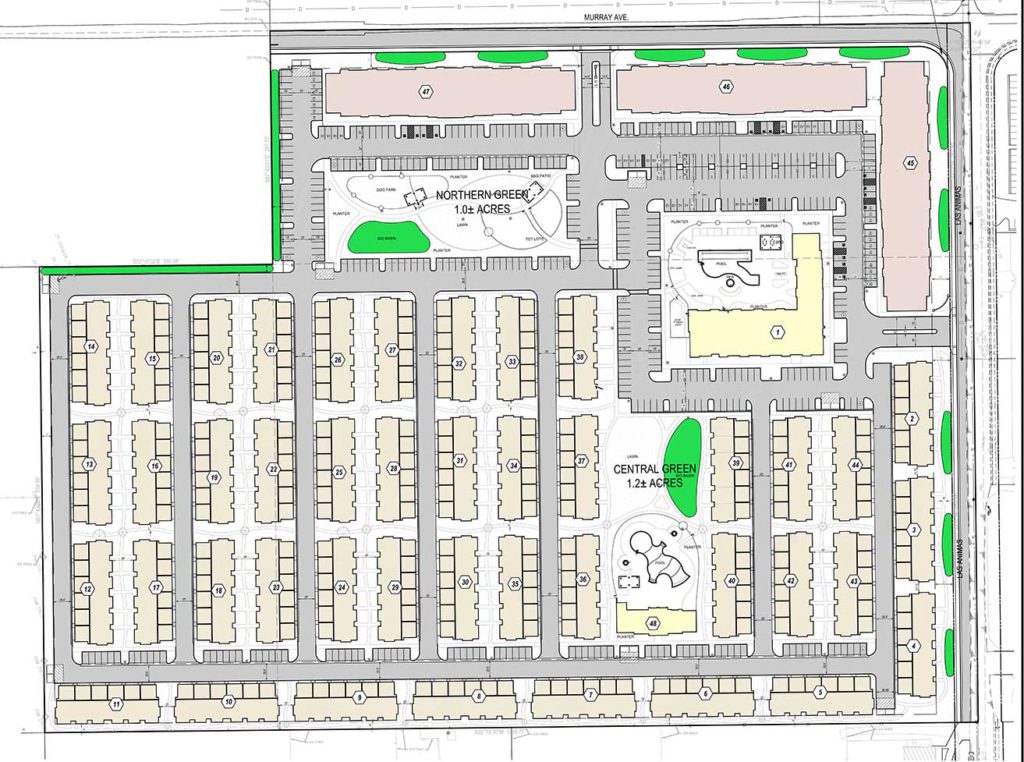The Gilroy City Council this week narrowly voted to defend the city against a lawsuit that claims it has violated state housing laws by declining, so far, to approve a 501-unit residential project proposed on Las Animas Avenue.
Following a July 29 closed session discussion on the litigation filed by developer Gandolfi Investments, the council voted 4-3 to fight the lawsuit, according to City Attorney Andy Faber. Voting in dissent were Council members Rebeca Armendariz, Zach Hilton and Fred Tovar.
The lawsuit was filed July 26 in Santa Clara County Superior Court. It claims that Gilroy city staff, the city council and mayor have flouted the state “builder’s remedy” law by declining to approve the project known as 315 Las Animas Ave., which is proposed on a 27-acre property and consists of 501 housing units of varying sizes.

The builder’s remedy law allows developers to bypass local zoning laws and build certain types of housing projects, even if those plans do not comply with a city or county’s zoning ordinance or general plan. A provision of the Housing Accountability Act, the builder’s remedy is triggered when a local jurisdiction fails to update its state-mandated housing element, or if the element is not found to be in compliance with California law.
Gandolfi Investments, a subsidiary of builder TenSouth, submitted a preliminary application for the Las Animas project in July 2023. In December, the developer filed more detailed plans for the 501-unit housing development.
In January 2024, the city’s building and planning department informed the developer that the application was incomplete, and asserted that the builder’s remedy does not apply because the city had adopted a draft housing element in May 2023. The city’s housing element, an eight-year housing plan required by state officials, was not certified by the state until August 2023—after TenSouth filed a preliminary application in July.
The lawsuit filed last week “also highlights how the City of Gilroy and its elected leadership, in an effort to block the project, repeatedly violated the Permit Streamlining Act and the Housing Accountability Act,” says a press release from Gandolfi Investments.
The developer says the City of Gilroy and its taxpayers could be on the hook for millions of dollars in fines and legal fees if the city fails to approve the Las Animas project.
Faber said the lawsuit is premature because the city has not denied the 315 Las Animas project. He noted the land where the project is proposed is zoned for industrial use, and is not listed in Gilroy’s Housing Element as a site available for residential development.
“The city staff has been processing the developer’s application and has asked for information to allow it to undertake its normal review for public safety code compliance and compliance with the California Environmental Quality Act,” Faber said, noting his comment is not an official statement by the City of Gilroy. “The city has not taken any steps to deny the project, nor has it taken an official position as to whether the builder’s remedy may ultimately apply to the application once its analysis is completed.
“Furthermore, notwithstanding the unfounded allegations of the petition, neither the staff nor individual council members have taken any irrevocable position as to the ultimate desirability of this project after staff completes its analysis.”
Faber said it is too early to tell how much it would cost the city to fight the lawsuit.
Ganfolfi’s lawsuit cites among its evidence two recent “technical assistance” letters from the California Department of Housing and Community Development to the City of Gilroy. The letters inform city staff that the 315 Las Animas project is protected by the builder’s remedy. A July 23 letter from HCD claims that the city’s determination that the application for the housing project was incomplete, is “an effective disapproval of the project.”
William McGuinn, general counsel for the 315 Las Animas project, said, “The City of Gilroy refused to process this project as a Builder’s Remedy project despite repeated guidance from the state saying it must. Now the city, and ultimately Gilroy taxpayers, face up to $25 million in fines and millions more in litigation costs, footing the bill of Mayor (Marie) Blankley’s personal power struggle with the state.”














Please elaborate on this supposed power struggle between our beloved mayor and the state of California bureaucracy. You cite no evidence of a power struggle. Report the news not your opinion.
First I’ve heard of this project, but “501 units of varying sizes,” doesn’t give all that much information to work with. From the plan image provided it looks like “project housing.” I understand where we are as a state with our affordable housing need, but I don’t agree how that should give way for a developer to drop their financial interest in our community simply because the law allows for it. I don’t see a green belt or planting strip on two sides of this development and with such a vague description of the units, one can easily envision an end-to-end wall of apartment like units which – as we have seen with previous like developments – does not fair well over the years. Not knowing the facts, I’ll suggest that there might be good reason for the city and mayor to want further review and I support that!